The Lai's...
The number of deities worshipped by the Manipuri Meeteis, is computed to be three hundred and sixty four in addition to the three members of trinity, i.e., Pakhangba, Sanamahi and Leimaren Sidabi . The supreme god is Atiya Guru Sidaba or Sidaba Mapu. For purpose of the worship the deities can be divided into several groups, viz., Lamlai - gods of countryside; Umanglai -forest deities; Imunglai -the tutelary deity of each house and Apokpa -the ancestors of each clan. | ||
| While acknowledging the gods and goddesses the Manipuri Meeteis exalt Sidaba Mapu or Atiya Guru Sidaba as the supreme. He is the high God assumed as existing prior to anything. In the mythology of Manipur, Atiya Guru Sidaba is described as forefather of all gods, men, animals and planets and also the husband of Leimaren Sidabi, the goddess of earth. The name of Atiya Guru Sidaba means literally "Sky-guru-immortal", the sky was personified here and treated as the immortal Guru or sole breeder of all that bred. W. Yamjao Singh has tried to trace the origin of Manipuri word 'Atiya' from the Sanskrit word 'Aditi' or 'Aditya' in the meaning of 'Aditi'. According to the myth regarding creations by Atiya Guru Sidaba as recorded in the Leithhak Leikharol, when Atiya Guru Sidaba decided to create man, a deity called Kodin emanated from him. Kodin created seven frogs and seven apes, but Atiya Guru Sidaba was not pleased enough. Kodin accordingly created a new shape exactly like the shadow of Atiya and then Atiya gave it live. That is how man came into being. He let loose the frog into water and the apes into hills. Then Atiya Guru Sidaba created the Sun (Numit) and the Moon (Tha) in the form of man. The Sun obtained the name of Kanjin-tu-thokpa and the Moon Ashiba; afterwards Atiya Guru Sidaba vanished from the earth.
Soraren or Sorarel came to be identified with Atiya Guru Sidaba. Soraren (Sora=god and ren=the chief or the highest) may originally have been a family god. Sorarel regarded as the "Lainingthou" or the king of all Gods. According to the myth of Manipur Sorarel killed the evil spirits with the help of his thunder-bolt. Some Manipuri scholars like Atombapu Sharma tried to trace Soralel as a corrupted word of Surendra, who is described as Indra in Vedic scriptures. The myth and lore of Bishnupriya Manipuris refers to the supreme deity as Dou Sidaba rubbing hands to create from the gods and goddess the human being to people the new land of Manipur. The most renowned ancient folk songs of Bishnupriya Manipuri refers a lot about Sorarel. The Rain-Invoking Songs(1450-1700) and also Madoi-Soralel songs(1500-1600), mentioned Soralel as the King of all gods. The ancient literatures of Bishnupriya Manipuri is represented by numbers of folk stories most of which are related to the Saralel, like Soralel'or satgo jilok( Soralel and and his seven daughters), Soralel baro pahangpa (The story of Soralel and Pakhangba) etc. Pakhangba is described as the destroyer of the universe in the mythology of Manipur. Pakhangba means "one who knows his father"; it also means "to be youthful". The Cheitharol Kumbaba mentions that Pakhangba was a man, the unifier of the people who is connected explicitly with the Ningthouja clan. According to this account of Pakhangba arrived in Manipur during the period of successive migrations associated with the name of Poireiton.The Ningthourol Lambuba describes Pakhangba as "God by day but man by night". Another aspect of Pakhangba is in the form of a snake. Several Manipuri scholars identified Pakhangba as Tha (the moon), Ananta (the snake god) and Siva of Hindu myth. The two most important of the myths make Pakhangba the brother of Sanamahi, and both sons of the supreme God Atiya Guru Sidaba. Atiya Guru Sidaba wanted to find out which of his sons recognize him not only as his father but also as his Guru. So to test their knowledge he took the form of a dead cow floated down a big river. Sanamahi (Kuptreng) dislikes the dead cow, but Pakhangba (Shentreng) realized it might be the god in disguise. Sanamahi asked how they could find whether this was so. For an answer Pakhangba argued that it is not fitting for a dead cow to move its tail. On hearing this Atiya Guru Sidaba, wishing to reveal himself to the full moved his tails. Then Atiya Guru Sidaba took his proper form and gave Shentreng the new name 'Pakhangba' ( pa=father, khang-ba=to know). Kuptreng came to be known as Sanamahi.
This myths ascribes a divine origin to Pakhangba, as well as divine nature. The divine aspect is also shown in that worship is afforded him by the ruling house, although with considerable secrecy. It should be stressed that the worship of Pakhangba remains prerogative of the Ningthoujas and intimately associated with the throne, so no member of other yek is allowed to worship him. Pakhangba also known as "Pahangpa" to the Bishnupriya and regarded as the destroyer of the Manipuri trinity (i.e., Atiya Guru, Sanamahi & Pahangpa) whom they worship on many important occasions. However historical records regard Pakhangba as a human ancestor. According to Cheitharol Kumbaba he reigned for a period of 120 years with equality and justice, and established a strong kingdom in Manipur. Varieties of bronze coins (of year 164 Samveda, i.e., 107 AD) discovered by archeologists bear Sanskrit legends in Devanagari script, claimed to be coins of Pakhangba. W. Yamjao Singh says "in the collection of coins there are a few pieces of the 2nd century A.D. of the Christian era, its legend is in the Devanagari scripts" (An Early History Of Manipur, Page-127). Several Bishnupriya Manipuri Scholars attempt to establish a connection between Pakhangba and Khalachai or Bishnupriyas, the Aryan settlers of Manipur Valley. Their claim is based on the point that as in the first century A.D., Devanagari scripts are used in the reign of Pakhangba, so Pakhangba was an Aryan settler. The view of Aryan origin of Pakhangba is mentioned by W. Ibohal Singh and also in the footnote comments of Cheitharol Kumbaba as .."they, therefore, believe that the Aryans passed through Manipur and established kingdoms in Burma. Thus they hold the view that Pakhangba was an Aryan settler and gave the name Yavishtha Pakhangba." The most important of the household deities is Sanamahi. Literally Sanamahi mean “Liquid gold”. The Manipuri puranas make Sanamahi a son of Guru Sidaba and Leimaren Sidabi, and elder brother of Pakhangba. The myth related that he created the universe, moral beings, frogs, animals, etc. he created man in the image of the Almighty father. The Guru infused intelligence into it in order to adore him. It is most significant that the name “Sanamahi” does not occur in Cheitharol Kumbaba until the time of Garib Nawaz (1709-1748), by which time Vaishnavism has already a strong hold in the land. It is mostly likely that Sanamahi was formerly known under different names. Sanamahi is also regarded as an important household deity of the Bishnupriya Manipuris. Some of the people termed Sanamahi by the name Senamanik (Golden ruby) . Sanamahi is molten gold in complexion like the Sun-god. Some scholars suggests that the name is derived from “Senmhya” of the Vedas. Also some of Manipuri writers have regarded him as sun god. This view seems to be influenced by the counterparts of Vedic deities in early Manipur.  5 Divining Sanamahi Coins Every Meetei family has a Piba(chief) whose main function is to officiate as a priest in the Puja. He is propitiated on the last day of the year. The image of Sanamahi is ceremoniously washed in the morning. Rice offering of cake offering is made to him to the accompaniment of Mantra’s. 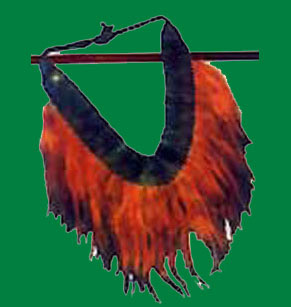 Sanamahi is worshipped together with his mother Leimaren, but seldom alone. He is also worshipped in every house and identical procedure is adopted. A particular place is set apart in the south-west corner, termed as Sanamahi Kachin, of the house. The people burn incense and wave lamp before Sanamahi and Leimaren. He is god of all those who desire life and energy. He is prayed for removal of disease. The festivals like Cheiraoba, Sanamahi Chemhomba etc. celebrate the glory of Sanamahi. Leimaren is the most important goddess worshipped by the Manipuri Meeteis. The earth goddess under the name of Leimaren or Leimarel ( the great princess) is a fascinating one. Her worship and her place in the house explicitly connect her with Sanamahi. According to the myth she was originally the wife of Atiya Guru Sidaba and was subsequently married to Sanamahi. This was the punishment to her for her partiality to Pakhangba in advising him to walk around the Gurus Throne and bow down in order to obtain the succession. The myth is concerned with the kingship. Atiya Sidaba announced that he would appoint as king the brother who returned first after circuiting the whole world. Sanamahi started off from the southern side of the Royal Kangla. Pakhangba, on the advice of Leimaren, circumambulated his fathers throne seven times regarding it equivalent to going round the world. Atiya Sidaba gave the throne to him. But when Sanamahi returned and found Pakhangba ascending the throne, burst into fire in anger and tried to kill him. The frightened Pakhangba took refuge among the Lairembi's (The Goddesses). But angry Sanamahi declared that if his brothers advisors were a man he would be killed and, and if a women he would marry her. But the Lairembi's include his mother Leimaren too, thus the matter of Sanamahi marrying his mother Leimaren is explained. The place of Leimaren in the house explicitly connect her with Sanamahi. She is venerated at Tin-Lai-Thaba during the marriage ceremonies. She is also afforded public worship on the first day of Manipuri new year.  Divining Coins used by the Maibis Leimaren is found in Bishnupriya Manipuri, mainly the Madoigang’s (or Laim-nais) culture in the form of Ima Githani or Githanipung. The Ima Githani is such a important deity to the Bishnupriya Madoigangs that every house must have the Githanipung corner and her religious significance become visible in every social or religious occasions. The Githanipung has her place in south-western corner of their house near the Baron or crop godown. An earthen pot or a pot made of metal brass , full of water with a lid is kept here on the platform and it is considered good to fill up the pot with new water every Tuesday or Thursday. The presence of water, which is one of the most essential domestic elements, is not surprising. The symbolic importance of water had its parallels both in the Vedic and Puranic literature and more widely in many ancient cultures. The Phunga Lairu is an important place, rather than a person, has a great religious significance in every Bishnupriya Manipuri house, also in most Meetei houses. “Phunga” means fireplace and the Phunga Lairu refers to the fireplace in the main room of house. It consists of a small hole and fire is kept burning in the hole by the help of husks, fuels and other materials. Orthodox Bishnupriyas used to offer to Phunga whatever they have to eat food before they eat. Phunga is also used in household works like burning dried fishes, dried beans and dried chili to make suitable dishes. There is a ritual that Phunga should kept firing in a house at least five days at the time of formal entry to a new house. The Apokpa, originated from the word ‘pokpa’ meaning “to beget or to give birth to". These domestic Lai’s are the ancestors of the immediate family circle. They are deceased males of the previous three generations (the father, the grandfather and great-grandfather), who look after the interest of the family. Worship of Apokpa is carried out by each household as a closely knit group. The foods for the offering are mainly Kabok (puffed rice), Larou (sweetened parched rice) and different kind of sweets and fruits. Also verities of different offerings are set out, which consists of the followings –
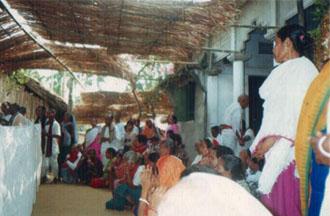 The Maiba and Piba enter the house and utter Mantra's and bows( Khurumba) to Apokpa. A clean surf cloth kept behind the entrance. Apokpa Khurumba ( meaning ‘bowing down to Apokpa') is observed in a detailed series of rituals. The various offerings to Apokpa buried in the house between the Phungga and the Lairu, and covered with seven layers of banana leaf. The offering includes three sets -
After arrival of the Maiba the raw food is first offered to Sanamahi, and then cooked by the Piba. Then the Maiba and Piba enter the house and utter Mantra's and bows( Khurumba) to Apokpa. Actually Apokpa Khurumba is the worship with appropriate food offerings of the ancestors who are conceivably within living memory. It needs mention that another cult of ancestor spirits termed as ‘Kasalai’, closely connected with the cult of Apokpa. 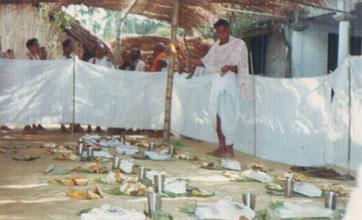 The rice cooked never be eaten by those outside the Sagei since it has been offered to the Lao of that Sagei The cult of Apokpa, is the cult of the ancestral spirit worshipping, called “Goror Dou Homadeni” (Goror Dou literally meaning “God of the House”), is the most important religious ceremony of Manipuri Bishnupriyas. The religious significance of Apokpa is so important that every Bishnupriya household must perform this ceremony before introducing the new paddy in the house. This ritual is performed in a total non-Hindu pattern and the performance doesn’t requires a Brahmin, any kind of Vaishnavite songs or any reading from Hindu scriptures. The domestic deities, which are the possession of particular clan or family groups. These are properly called Yamjao lai’s. There are traditionally 445 Sagei’s in Meetei community, each of which has own lai. Although these are regarded as the ancestors or ancestress of the sagei this is not be constructed as implying an ancestor worship. Examples of such lai’s are Soibam Lairema of Soibam sagei; Hijam leirema of Hijam sagei and so on. The Bishnupriya Manipuris have also their clan lai’s. There are nearly 70 Lokeis (or sagei’s) or clans in the Bishnupriya Manipuri Society . Among these Lokei’s Raja Lokei (Nighthou-Khongiya) or members of Royal family), Lempa Lokei (Thokchom) and Moirang Lokei (Moirang-them) are the dominating groups and each of these groups have their own clan deities. Thangjing is one of the four popular Lai’s associated with a particular geographic location, widely known by the Manipuri Meeteis as Maikai Ngakpa; i.e, “guardian of directions”.  Moirang harouba at Thangjing Temple at Manipur Thangjing is specially associated with the Moirangs; he was the guardian of South-West of Manipur Valley. The love literature, legends and stories of Moirang clan attributed to him. In the later Puranik works Marjing is identified with the Aryan God Aswini Kumar. He has agricultural traits as he controls the vernal rain. There is a temple dedicated to Thangjing at Moirang. Marjing is another deity regarded as the guardian of North-Eastern direction of Manipur. His main importance in the Manipuri myth is that he invented polo or Kang-jei, the national game of Manipur. According to the myth, Kang-jei played originally by the gods, grouping seven deities on each side. 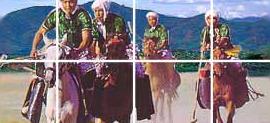 Marjing invented polo or Kang-jei, the national game of Manipur Cheitharol Kumbaba records that in the year 1618 there occurred the death of an inflant prince, Mayamba. Immediately following this Marjing was appeased by offering of domestic animals. The people invoke his name and worship him with polo stick and ball at the time of domestic animal epidemic. Wangbaren is another tutelary deity associated with the South-East direction. Wangbaren had his shrine in the south of Shungu on the bank of Imphal river(40 miles to the south of Imphal). The worship of Wangbaren has been associated with the warding off of sickness and disaster. Wangbaren is black complexion, black garment and a black tiger as his carter. According to the Bishnupriya myth Wangbaren is the most short-tempered deity; He can be displeased very easily and people who died of drawing said to be killed by Wangbaren. Atombapu Sharma was greatly impressed by the similarity of Wangbaren and Vedic god Varuna.  Khongba Leithong Patpa Wangbaren can be identified with Kaal or Kaalthakur, the river deity of Bishnupriya Manipuris. ‘Kaal’ (>Kala) laterally meaning the black deity. According to Bishnupriya myth, Kaal is very fond of black colored fishes and people are advised to avoid purchasing black fishes from the market. The worshipping of Kaal performed by offering Chapal’s, which if mainly made of green grasses, sesame seeds, rice, milk and cow-dung displayed on a Banana leaf. Koubru is believe to have his abode in the peak which bears his name, situated the northern end of Manipur. He occupied the position of Kubera, does in the vedic pantheon. His abode is Mount Koubru (900 ft) named after him. On number of occasions, Cheitharol Kumbaba portrayed Koubru by the phrases, “ Koubru fired a gun” , “spreading a white cloth”, “having a white cloth spread for him” etc. This deity, Koubru, is considered to be the god of country-side and he is worshipped annually. Temples dedicated to Koubru are to be found among the Loi villages ( Sekmai, and Phayeng). Manipuri Bishnupriya’s have their own tutelary deities widely known by them as “Lamor Dou”s; i.e, “deiteis of particular places”. The “Lamor Dou” of a place include two deities mainly -
Lam-Lai is the male tutelary deity of that particular place and the female tutelary deity of a particular place, termed as The Lam-Laima. The Lamor-Dou's are one form of soul worshipping. The foremost male and female souls are given the honor to be the Lam-Lei and the Lam-Leima of a particular place. The Lamor Dou’s are worshipped annually, during start of a new year, in good admiration by following the decorum’s and formalities in different localities. The Cult of Planets and Stars... The cult of planets and stars was very popular in Manipur and the puranic stories testify to this. It is said that the seven Gods who came with Sidaba Mapu in human were identified with seven planets. They are -
The planetary deities are regarded as animal headed. Mars has the head of a buffalo, Mercury that of an elephant, Jupiter of a stag and Venus of a tiger. According to another myth the Seven Goddess who were married to the seven Gods gave birth to the seven sons, who were the progenitors of the seven clans of Manipur. |
Monday, December 20, 2010
Manipuri lai
Subscribe to:
Post Comments (Atom)
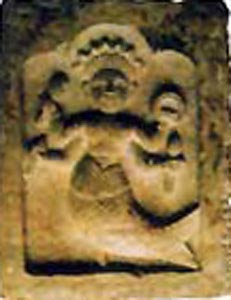
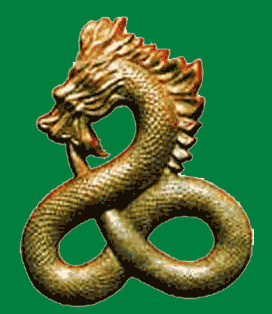
No comments:
Post a Comment